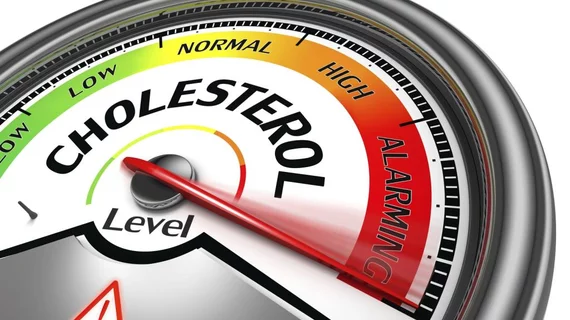Cumulative exposure to low-density lipoprotein cholesterol (LDL-C), often referred to as "bad cholesterol," during young adulthood and middle age is associated with an elevated risk of developing cardiovascular disease (CVD) later in life, according to new data published in JAMA Cardiology.
The study's authors tracked data from four different cohort studies—the Atherosclerosis Risk in Communities Study, Coronary Artery Risk Development in Young Adults Study, Framingham Heart Study Offspring Cohort and Multi-Ethnic Study of Atherosclerosis—for this analysis. Data came from 1971 to 201, covering 18,288 participants.
Inclusion in the study required participants to have had two or more LDL-C measures that were at least two years apart between the ages of 18 and 60, with at least one of those measurements happening during middle age (defined as 40 to 60 years old).
Fifty-six percent of patients were women. The mean patient age was 56.4 years old, and 71% self-identified as non-Hispanic white.
During a median follow-up of 16 years, a total of 1,165 incident coronary heart disease (CHD), 599 ischemic stroke, and 1,145 heart failure (HF) episodes were reported.
According to the authors, the patterns of the associations for CHD were similar among men and women: 1.82 for women vs. 1.67 for men.
In the analysis, the hazard ratios for CHD were: 1.57 for cumulative LDL-C level, 1.69 for time-weighted average LDL-C level, and 0.88 for LDL-C slope.
The authors found no association between any of the LDL-C variables and ischemic stroke or HF.
“The findings suggest that maintaining an optimal level of LDL-C throughout young adulthood and middle age can minimize the lifetime risk for atherosclerotic cardiovascular disease; understanding young adult levels of LDL-C may help inform strategies for preventing coronary heart disease,” wrote lead author Yiyi Zhang, PhD, with the division of general medicine at Columbia University Medical Center in New York City, and colleagues.
Read the full study here.
